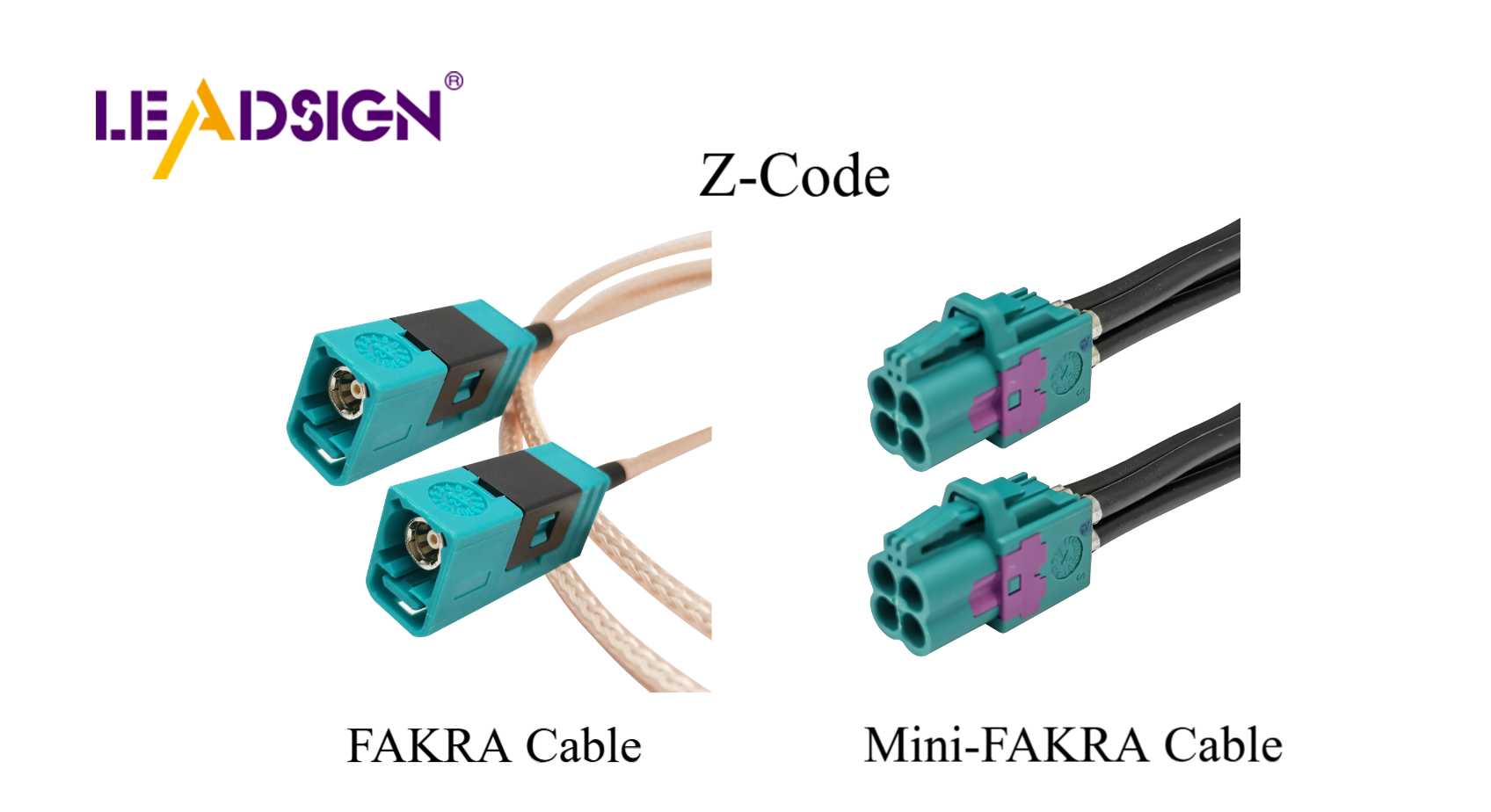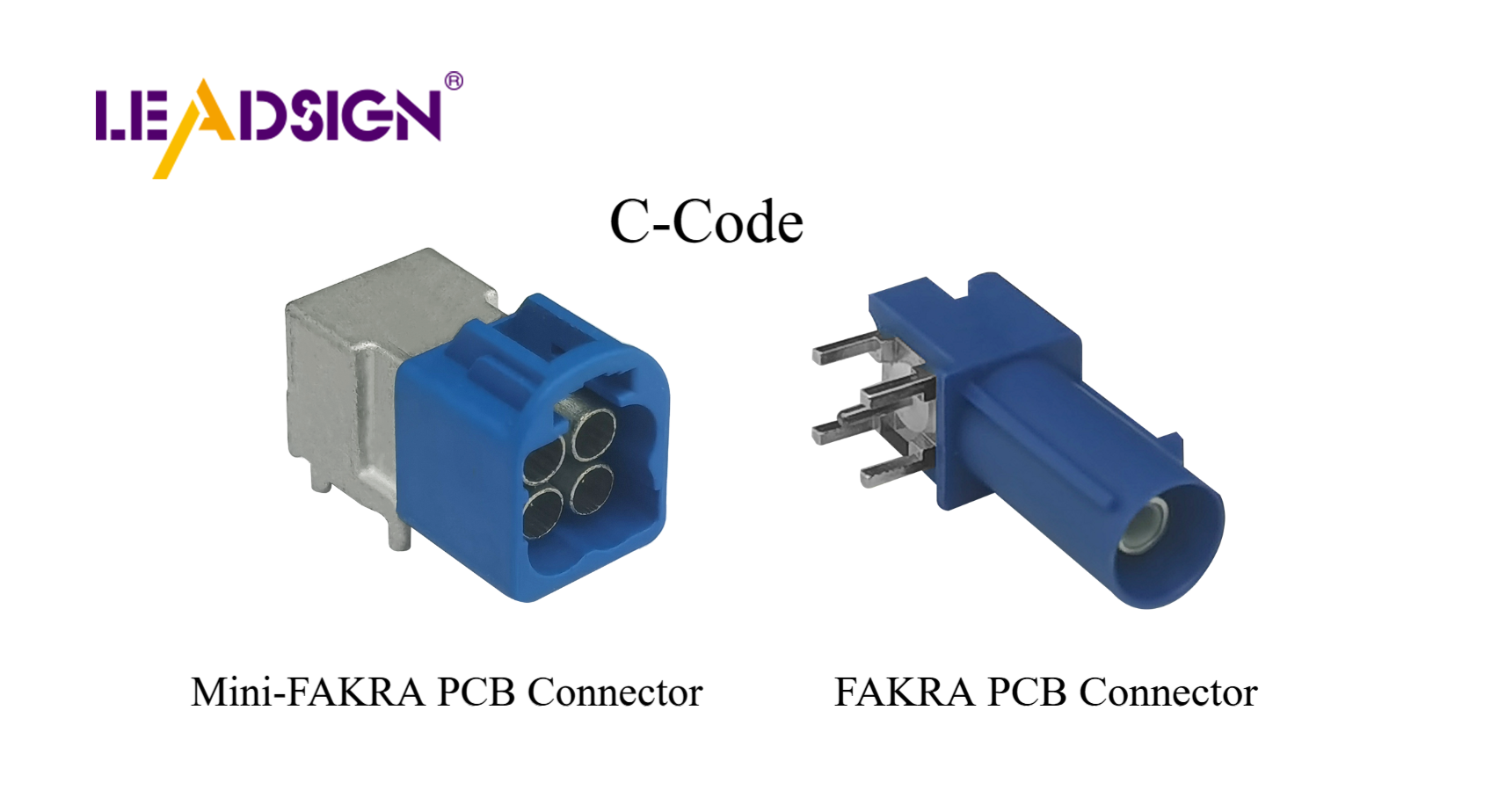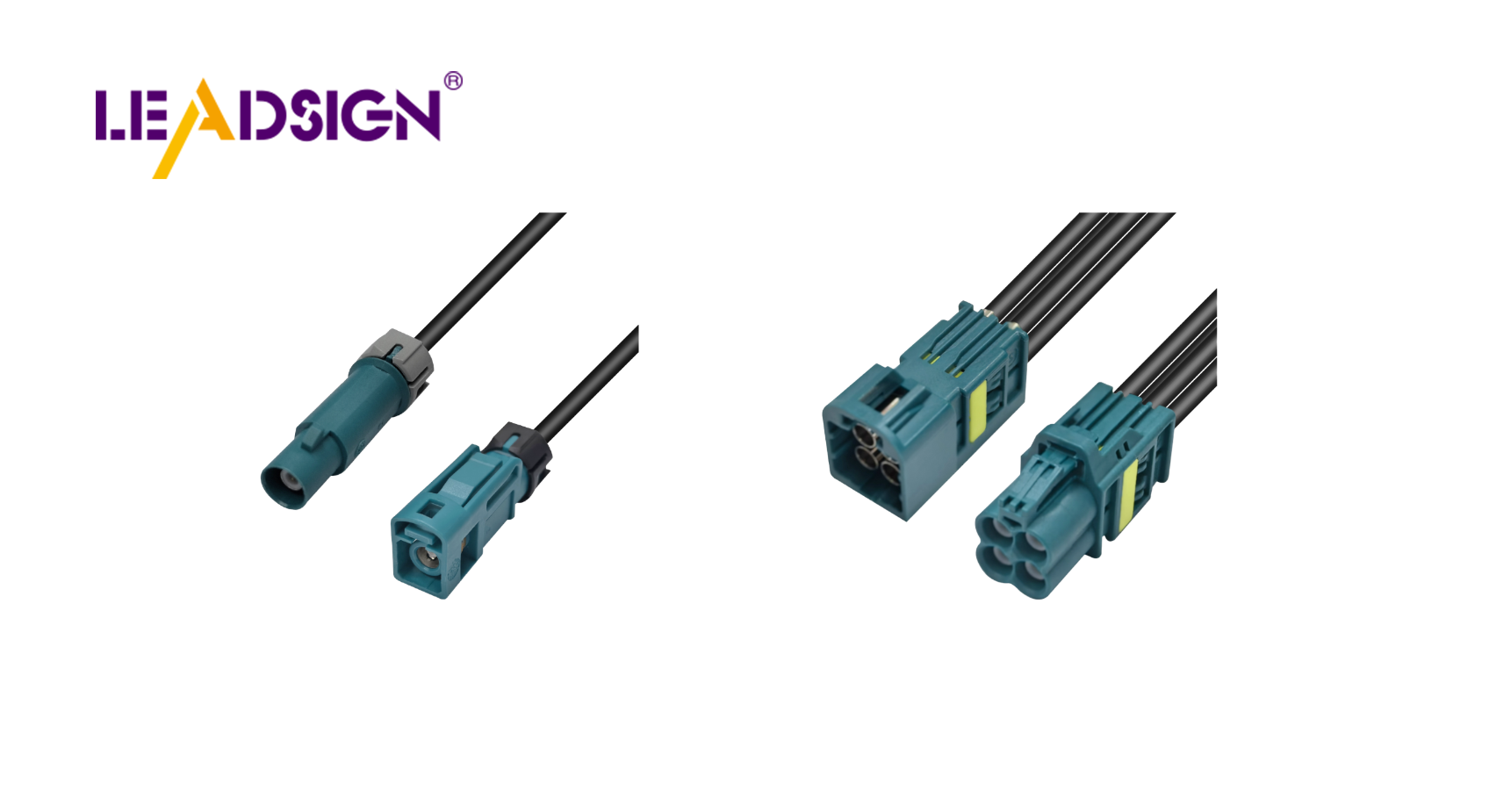FAKRA vs Mini FAKRA Which 50 Ohm Coax Cable Wins

FAKRA vs Mini FAKRA: A Detailed Comparison
Explore the differences between FAKRA and Mini FAKRA coax cables for automotive applications.
Features | FAKRA | Mini FAKRA |
|---|---|---|
Size and Design | Bigger, standard for car setups | Smaller, saves 80% space |
Performance and Signal Quality | Analog signals, GPS, telematics | High-speed data transfer, up to 20 GHz |
Durability and Reliability | Resists heat, shaking, water | Tough, waterproof seals |
Compatibility with 50 Ohm Coax Cable Types | Standard design, fits most cables | Compact, fast data transfer |
Applications | Infotainment, GPS, telematics | Autonomous driving, driver assistance |
FAKRA and Mini FAKRA are important 50 ohm coax cable types. FAKRA connectors are strong and reliable for car radios and GPS systems. Mini FAKRA connectors are smaller and save up to 80% space, making them ideal for compact automotive designs. They also support high-speed data transmission, perfect for modern vehicles. Choose the right connector based on your needs for durability or space-saving efficiency.
Key Takeaways
FAKRA connectors are robust and reliable, making them ideal for standard automotive systems where durability is essential.
Mini FAKRA connectors save up to 80% space, making them perfect for modern vehicles with compact designs and advanced technology.
Both FAKRA and Mini FAKRA maintain a 50-ohm impedance, ensuring clear signal quality for various automotive applications.
Choose FAKRA for applications requiring strong connections in larger spaces, such as infotainment and GPS systems.
Opt for Mini FAKRA when dealing with high-speed data transmission needs, like autonomous driving and advanced driver assistance systems.
Utilizing both FAKRA and Mini FAKRA connectors in a single system can optimize performance by balancing durability and space efficiency.
Understanding the specific needs of your automotive system will help you select the right connector type for optimal performance.
Understanding FAKRA Connectors

Overview of FAKRA Terminals
FAKRA terminals are special connectors used in cars. They connect coaxial cables to ensure communication works well. These terminals come in many shapes and sizes for easy fitting. Their strong design helps them handle signals without problems. This ensures smooth communication and entertainment in vehicles.
A unique feature of FAKRA terminals is their color-coded covers. The colors make it easy to match parts correctly during setup. They also have a locking system to stop wrong connections. These features make FAKRA terminals reliable for car systems.
Key Features of FAKRA Connectors
FAKRA connectors have qualities that make them work well:
Durability: They survive tough car conditions like heat, shaking, and water.
Standardization: They follow rules to fit different car brands and systems.
Versatility: They carry both power and signal, useful for many tasks.
Ease of Use: Colors and locks help avoid mistakes during installation.
Robust Construction: Their build blocks interference, keeping signals clear.
These traits make FAKRA connectors trustworthy for car electronics.
Common Applications of FAKRA Terminals
You can find FAKRA terminals in many car systems:
Infotainment Systems: Connecting radios or TVs for entertainment.
GPS Antennas: Helping with accurate maps and directions.
Telematics Systems: Allowing cars to share data with each other.
Driver Assistance Systems: Powering tools like parking sensors or warnings.
RF Applications: Managing signals for Bluetooth or keyless entry.
Because they handle so many tasks, FAKRA terminals are vital in modern cars. Whether for fun or safety, they always perform well.
Advantages and Limitations of FAKRA
FAKRA connectors are strong and dependable for car systems. They work well in tough conditions like heat, shaking, and wetness. This makes them great for important vehicle systems.
A key feature of FAKRA is their color-coded covers. These colors make it easy to match parts correctly. It helps avoid mistakes during setup, saving time and effort. The locking system also keeps connections secure and steady.
FAKRA connectors can carry both power and signals. This makes them useful for many tasks in cars. They work well with radios, GPS antennas, or data-sharing systems. Their design fits many car brands easily.
Another benefit is blocking electromagnetic interference (EMI). This keeps signals clear for communication or entertainment tools. You can trust FAKRA to send signals without interruptions.
But FAKRA connectors are not perfect for small spaces. For tight designs, Mini FAKRA connectors might be a better choice. They do the same job but take up less room.
Exploring Mini FAKRA Connectors
Overview of Mini FAKRA Terminals
Mini FAKRA terminals are small connectors for modern cars. They work well in tight spaces without losing performance. These connectors are smaller than regular FAKRA ones, saving 80% space. Even with their size, they keep a 50-ohm impedance for strong signals.
They are great for fast data transfer in advanced car tech. Their design lets you fit many parts into small areas easily. This makes them perfect for new systems like self-driving and driver assistance tools.
Key Features of Mini FAKRA Connectors
Mini FAKRA connectors have features that make them useful:
Compact Design: Small size fits in tight car spaces.
High-Speed Data Transmission: Handles speeds up to 28 Gbps.
Wide Frequency Range: Works up to 20 GHz for clear signals.
Durability: Stands up to heat, cold, and shaking.
Modular System: Flexible design saves space and resources.
These qualities make Mini FAKRA connectors improve car performance.
Common Applications of Mini FAKRA Terminals
Mini FAKRA terminals are used in advanced car systems:
Autonomous Driving Systems: Links sensors and cameras for safe driving.
Driver Assistance Systems: Powers tools like lane warnings or cruise control.
Infotainment Systems: Supports streaming or entertainment screens in cars.
Navigation Systems: Helps GPS give accurate directions while traveling.
Advanced Communication Systems: Manages data between vehicles or road systems.
Using Mini FAKRA connectors helps cars perform better with modern technology.
Advantages and Limitations of Mini FAKRA
Mini FAKRA connectors have many benefits for modern cars. Their small size saves 80% more space than regular FAKRA connectors. This helps fit more parts into tight car spaces, which is important for new vehicle designs. Even though they are smaller, they still keep a 50-ohm impedance for strong signals.
They also handle very fast data speeds. Mini FAKRA connectors can work at speeds up to 28 Gbps and frequencies up to 20 GHz. This makes them great for systems like self-driving, driver assistance, and entertainment tools. Their flexible design also helps save space during setup.
Mini FAKRA connectors are tough too. They can handle heat, cold, shaking, and stress in cars. This means they work well even in hard conditions.
But Mini FAKRA connectors don’t fit all types of systems. They focus on saving space and connecting many parts but may not work with every setup. While good for high-speed tasks, traditional FAKRA connectors might be better for stronger durability or standard use cases.
Key Differences Between FAKRA and Mini FAKRA

Size and Design
FAKRA connectors are bigger and fit regular car setups. They are strong but need more space to install. This makes them good for systems where space isn't an issue.
Mini FAKRA connectors are much smaller. They save 80% more space than FAKRA connectors. Their small size lets you add many parts in tight areas. They work well in modern cars with advanced tech like self-driving systems. Mini FAKRA's compact design is perfect for next-gen vehicles needing efficient use of space.
Performance and Signal Quality
Both types keep a 50-ohm impedance for clear signals. FAKRA connectors work best with analog signals in standard car systems. They handle GPS, radios, and telematics well.
Mini FAKRA connectors are made for fast data transfer. They support up to 20 GHz frequencies and 28 Gbps speeds. This makes them ideal for cameras, driver tools, or car-to-car communication. For high-speed needs, Mini FAKRA is the better pick.
Durability and Reliability
Both connector types are tough and reliable in cars. FAKRA connectors resist heat, shaking, and water easily. Their strong build ensures they last long in regular setups.
Mini FAKRA connectors are also durable despite being smaller. They can handle the same tough conditions as FAKRA connectors. Many come with waterproof seals or special covers to block dust or fluids. These features ensure they work well even in harsh environments.
Compatibility with 50 Ohm Coax Cable Types
Choosing connectors for your 50 ohm coax cable is important. Both FAKRA and Mini FAKRA connectors have 50-ohm impedance. This makes them good options for car systems. But their use depends on design and purpose.
FAKRA connectors are known for their standard design. They work well with most 50 ohm coax cables. These are great for GPS, radios, and telematics in cars. Their strong build and secure locks make them reliable in tough conditions.
Mini FAKRA connectors are better for small spaces in modern cars. Their tiny size fits tight areas without losing signal quality. They handle fast data speeds in advanced tools like cameras or self-driving systems. Mini FAKRA breakout cables mix the best of both types, working with many devices while staying compact.
Use Case Suggestions
When to Pick FAKRA Terminals
FAKRA connectors are great for general car systems. Their strong build makes them reliable and long-lasting. These connectors work well when space is not a big issue. Examples include:
Infotainment Systems: They connect radios, TVs, and other entertainment devices.
GPS and Navigation: They send accurate signals for maps and location tracking.
Telematics Systems: FAKRA supports data sharing between cars and networks.
Their larger size fits bigger cables and higher power needs. The color-coded design helps match parts easily during setup. A locking system keeps connections secure without mistakes. If you want reliability and easy use, choose FAKRA terminals.
When to Pick Mini FAKRA Terminals
Mini FAKRA connectors are best for modern car systems needing small parts. They are 80% smaller than regular FAKRA connectors, saving space in tight areas. These are perfect for advanced setups like:
Autonomous Driving: Mini FAKRA links cameras and sensors for self-driving cars.
Driver Assistance Systems: They support tools like lane warnings or cruise control.
Advanced Infotainment: Mini FAKRA handles fast streaming and entertainment features.
They also manage frequencies up to 20 GHz with speeds of 28 Gbps. This makes them ideal for next-gen vehicles needing compact designs or high-speed tasks.
Using Both FAKRA and Mini FAKRA Together
Sometimes, using both types of connectors works best. Combining them balances durability with saving space. For example:
Mixed Systems: Use FAKRA for GPS antennas but mini FAKRA for cameras.
Upgraded Designs: Keep old systems with FAKRA while adding mini ones for new tech.
Tight Spaces: Combine both to fit more parts without losing performance.
By knowing each type's strengths, you can pick the right mix to suit your needs.
Deciding between FAKRA and Mini FAKRA depends on your car's needs. FAKRA connectors are strong and work well with regular systems. Mini FAKRA connectors are much smaller, saving 80% more space. They fit tight spaces and handle many connections easily. For modern cars needing compact, fast solutions, Mini FAKRA is better. Knowing these differences helps you pick the right connector for your car’s performance and specific needs.
FAQ
What are FAKRA connectors used for?
FAKRA connectors help in automotive communications. They link GPS, radios, and telematics systems. Their strong design works well in tough conditions like heat or shaking. Color-coded covers make setup easy by avoiding wrong matches.
Why choose Mini FAKRA connectors over FAKRA?
Mini FAKRA connectors fit small spaces better. They save 80% more space than regular FAKRA ones. This makes them great for new cars with tools like self-driving systems. Even though they’re smaller, they still send data fast and last long.
How do FAKRA and Mini FAKRA connectors differ in size?
FAKRA connectors are bigger and suit normal car setups. Mini FAKRA ones are tiny, saving space in tight areas. Their small size lets you connect more parts where space is limited.
Are Mini FAKRA connectors as durable as FAKRA connectors?
Yes, Mini FAKRA is just as tough as regular ones. Both can handle heat, cold, and shaking well. Mini versions also have waterproof seals to keep working in harsh places.
Can FAKRA and Mini FAKRA connectors be used together?
Yes, both types can work together in one system. Use regular FAKRAs for GPS antennas and Minis for cameras or sensors in tight spots. This mix gives strength and saves space.
Which connector is better for high-speed data transmission?
Mini FAKRAs are faster than regular ones for data tasks. They handle up to 20 GHz frequencies and 28 Gbps speeds easily. This makes them best for modern systems like entertainment or self-driving tools.
How do FAKRA connectors prevent incorrect connections?
FAKRAs use color codes to avoid mistakes during setup. Each color shows its job, like GPS or radio use. These colors help match the right parts quickly without errors.
Are Mini FAKRA connectors suitable for all automotive systems?
Mini versions work best with compact designs needing fast data transfer. But they may not fit setups needing big cables or extra power handling. In those cases, regular FA-KRAs work better.
What makes FAKRA connectors reliable for automotive use?
FAKRAs are made strong for automotive connections under tough conditions like wetness or shaking. Their lock system keeps connections steady over time without failing.
Can Mini FAKRA connectors handle analog signals?
Yes, Minis can carry analog signals too but excel at digital data tasks instead of analog-only uses where standard FA-KRAs might be preferred.
See Also
Harnessing FAKRA Coaxial Cables For Enhanced Performance
Maximizing Efficiency With FAKRA Coaxial Cable Connectors
Why FAKRA Coaxial Cables Matter In Automotive Technology

